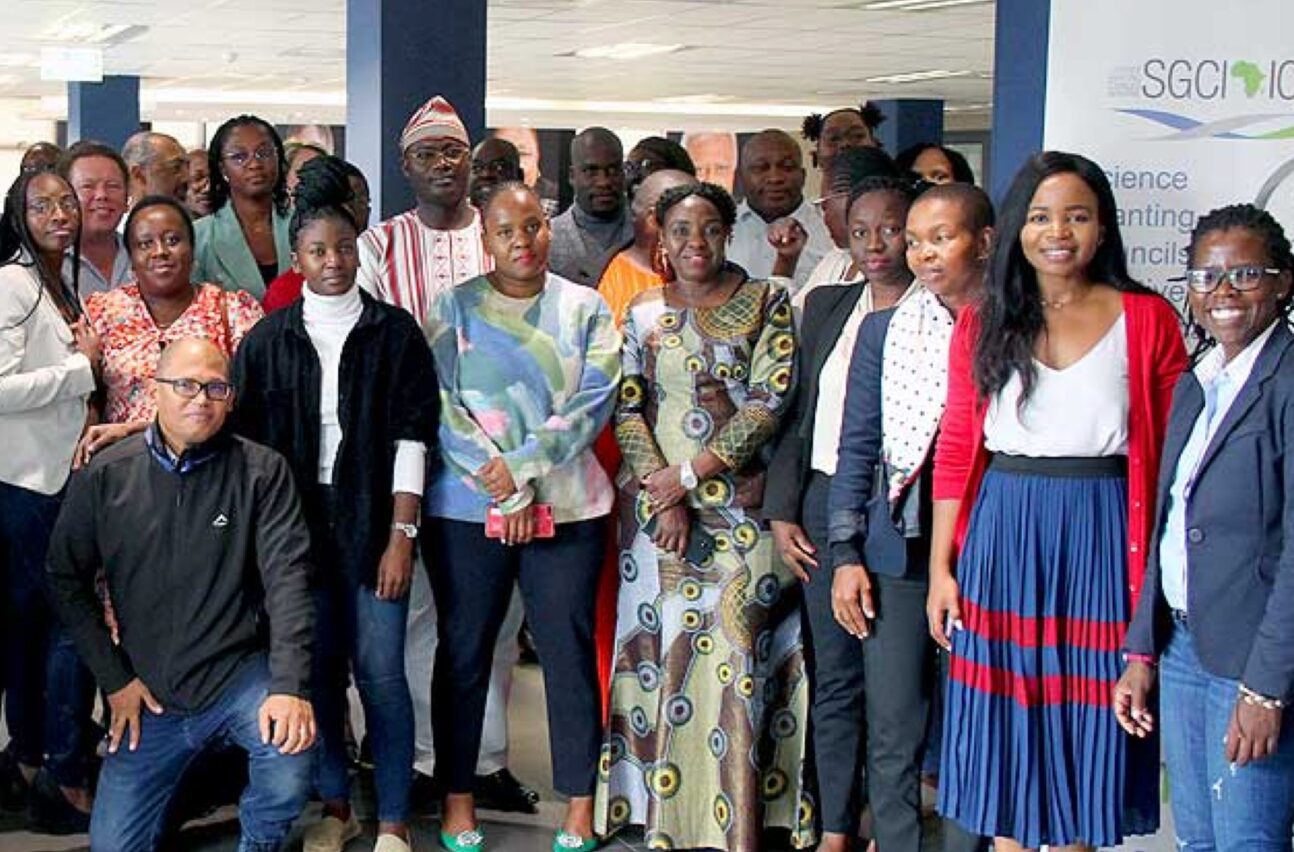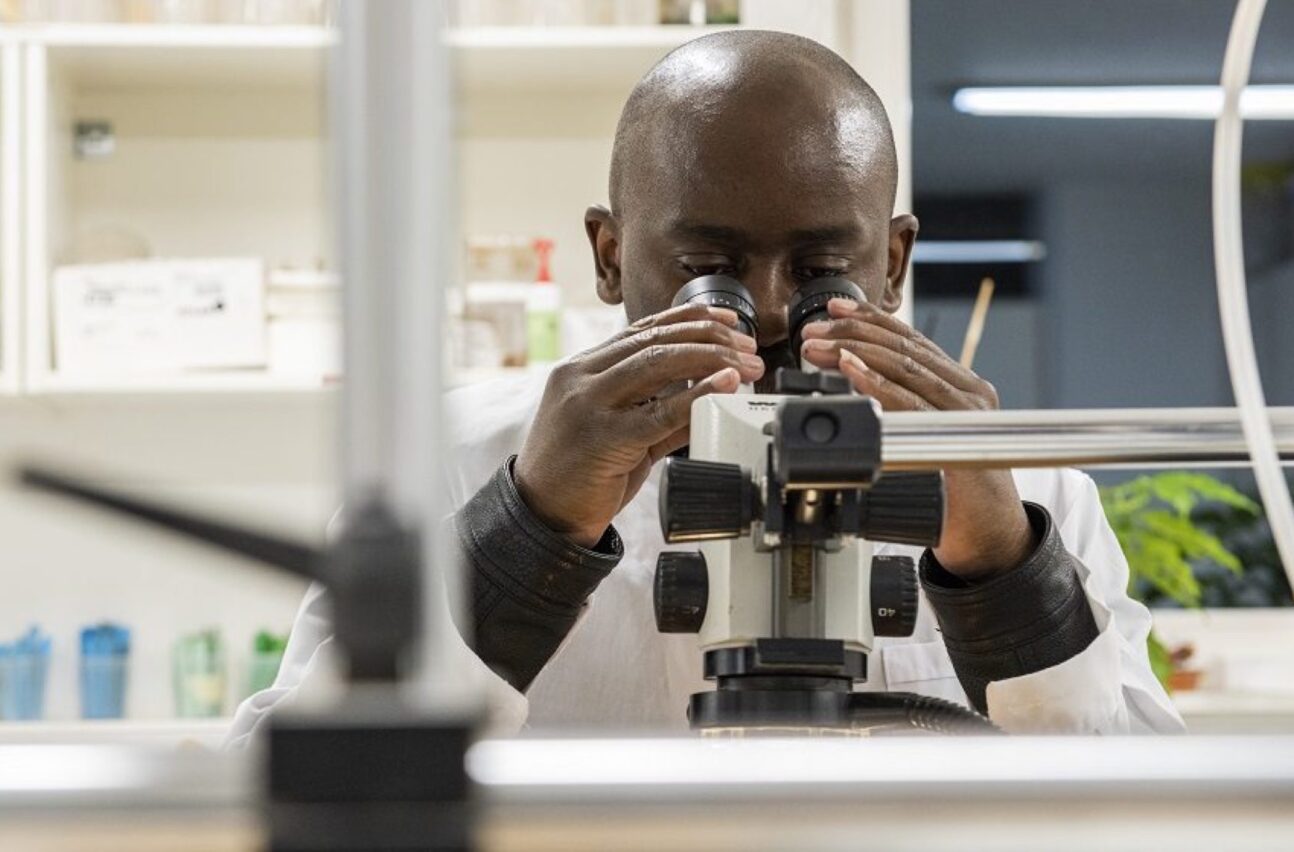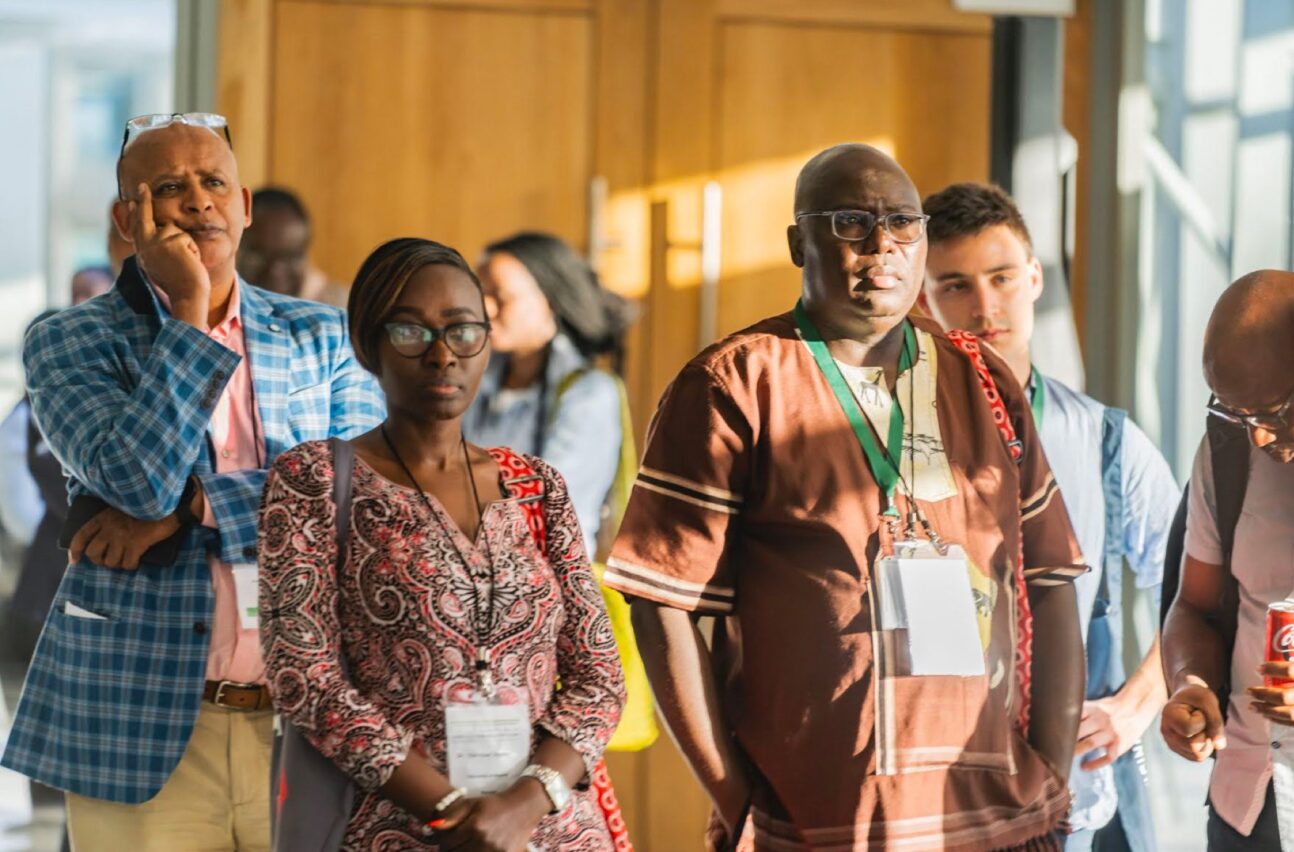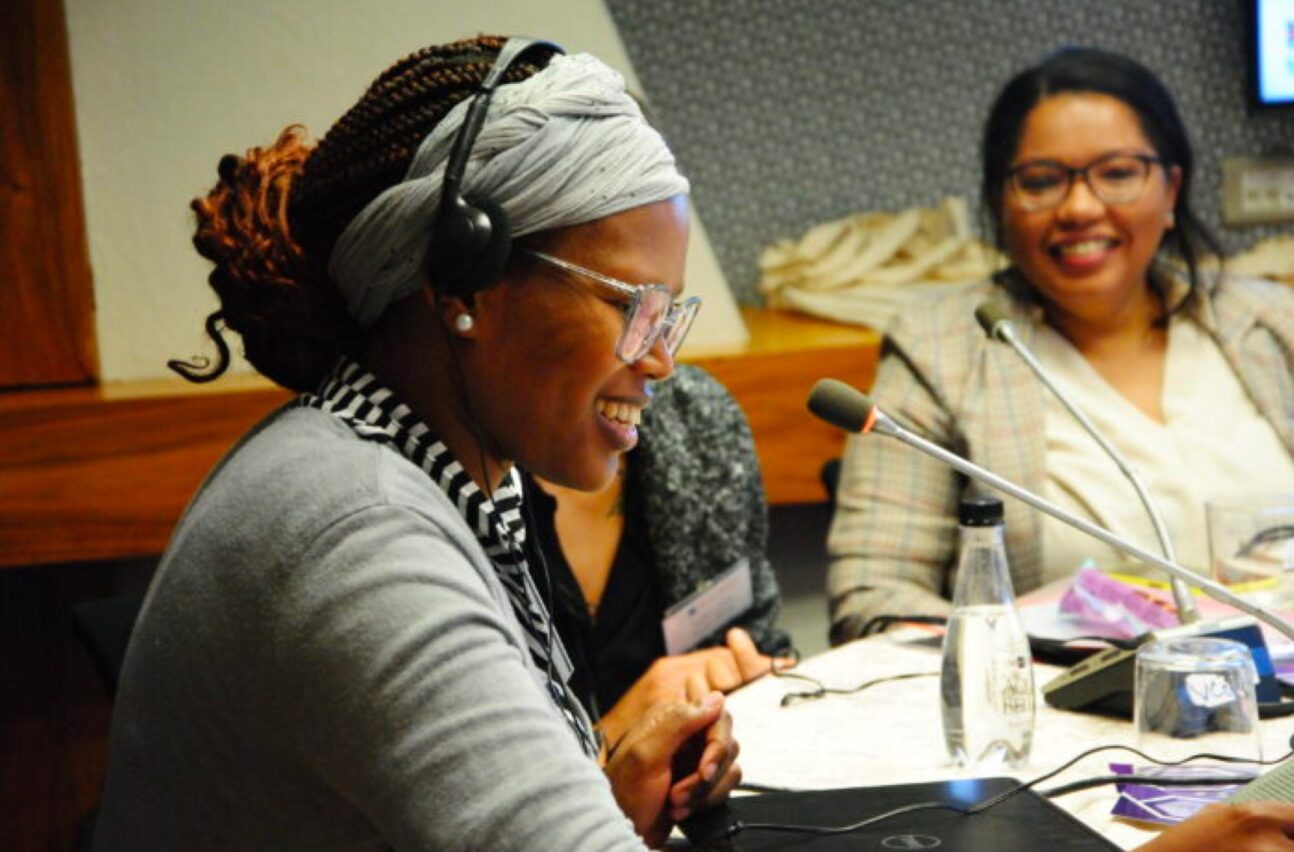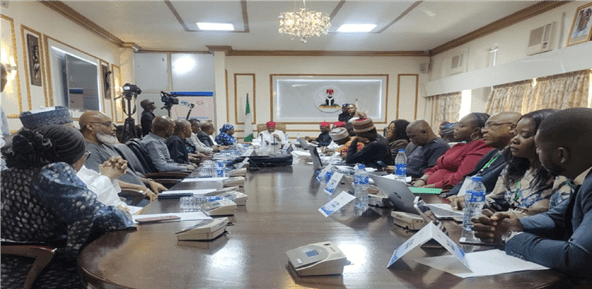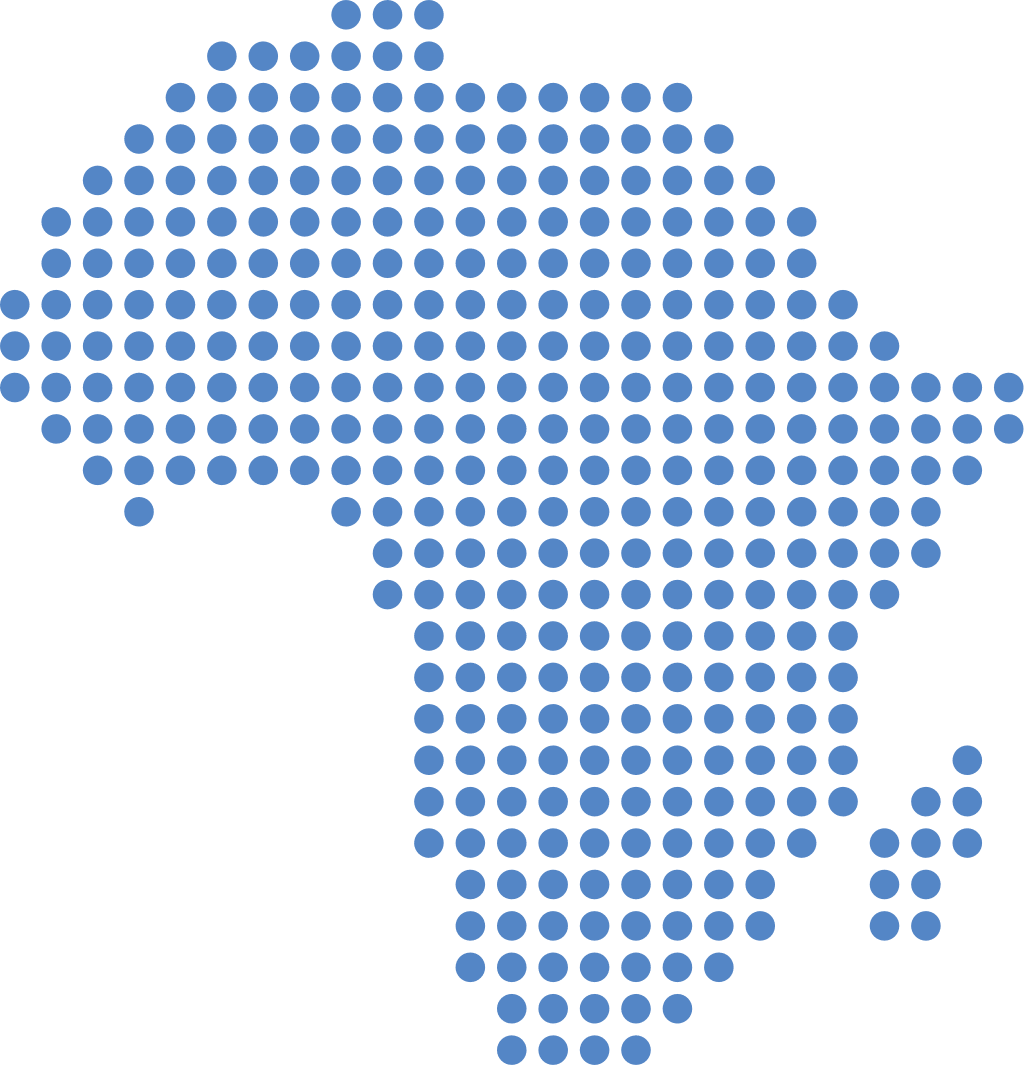The grant-making cycle is a powerful tool for change and can help to advance gender equality and inclusivity in the field of science, technology and innovation in Africa. A recent…
The grant-making cycle is a powerful tool for change and can help to advance gender equality and inclusivity in the field of science, technology and innovation in Africa. A recent targeted technical assistance workshop was designed to make that change happen.
With an emphasis on ‘doable’ interventions, teams from nine African Science Granting Councils (SGCs) took steps towards the mainstreaming of gender equality and inclusivity (GEI) in their operations during a comprehensive Targeted Technical Assistance Workshop held in Cape Town, South Africa, in the final week of August 2022.
The three-day workshop, hosted by the Human Sciences Research Council, working with partners Gender at Work (G@W), CODESRIA and Jive Media Africa, was carefully designed to offer direct technical support to councils, facilitating the identification of opportunities to integrate GEI in their work and in the development of practical action plans for implementing a GEI-strengthening activity in their grant-making cycle.
Members of SGCs from Cote d’ Ivoire, Senegal, Zimbabwe, Burkina Faso, Botswana, Ethiopia, Ghana, Uganda and Nigeria took part in the workshop, which was offered as part of the Gender & Inclusivity (G&I) Project of the Science Granting Councils Initiative, a multi-funder initiative running since 2015 and geared towards supporting the development of research and evidence-based policies that contribute to economic and social development.
The G&I project recognises that while the grant-making cycle is a powerful tool for advancing gender equality and inclusivity in the field of science, technology and innovation in Africa, science granting councils in the region are not all equally equipped to incorporate gender-transformative policy and practice into their work.
A leaky pipeline
Outlining the motivations behind the G&I project at the start of the workshop, HSRC Principal Investigator Professor Heidi van Rooyen said while there were improved educational outcomes for girls in many countries and there were more women joining STEM programmes, participation of women was still declining along the STI pipeline, with the result that few women hold leadership and decision-making positions in STEM sectors.
For example, the workshop heard that the UNESCO Institute of Statistics report indicates that only 30% of researchers in the sub-Saharan region are women.
Among the drivers of gender disparities in STI were entrenched biases, stereotypes, double standards, harassment and gender-based violence in research environments – all of which negatively affect women’s confidence and sense of belonging in the workplace, said Van Rooyen.
Van Rooyen argued that the advancement of gender equality in STI needed action or ‘fixes’ on three interconnected fronts: the numbers, the institutions and the knowledge.
‘Fixing the numbers’ captures the need to increase women’s participation in STI research; ‘fixing the institutions’ relates to the need to promote gender equality through structural change in organisations; while ‘fixing the knowledge’ refers to stimulating research excellence by integrating GEI in research methods and content.
Science granting councils had an important role to play in driving the necessary change. However, progress was uneven due, in part, to the lack of an intersectional approach to research as well as resource constraints.
Understanding intersectionality
Expanding on the concept of ‘intersectionality’, co-Principal Investigator, Dr Ingrid Lynch from the HSRC said while it was becoming widely acknowledged that the integration of gender promotes excellence in research and advances equality in society, there are calls to go beyond gender to include overlapping vulnerabilities.
Hence, the application of an “intersectional lens” which acknowledges that people inhabit multiple identities and experiences at the same time and that these identities often intersect to reinforce particular forms of marginalisation.
Although gaining currency as the ‘gold standard’ in gender transformation approaches, the concept of intersectionality is still perceived as complicated and methodologically vague. “There are certainly no guidelines in place for public funding agencies to apply this lens,” said Lynch.
It was this lack that motivated Lynch and others to embark upon an NRF-funded study that recently produced a paper titled “Intersectional research, grant-making and human capital development: Considerations for SGCs in advancing equality, diversity and inclusion”.
In a critical systematic review of peer-reviewed scholarship using intersectionality as framework, Lynch and her team drew on over 600 peer reviewed articles published around the world from January 2015 to December 2019. The results showed that by far the majority (60%) of papers concerned with intersectionality were conducted in North America while only 2% were from Africa. An even larger majority – 87% — fell within the field of social sciences and humanities, while 10% were in health fields and only 2% in STEM disciplines.
“Considering the realities and social and developmental challenges in Africa, the fact that health sciences and STEM are so underrepresented is something to take note of,” Lynch told the workshop.
As far as social identities were concerned, gender (28%), race (18%) and class (9%) formed most of the focus of studies, with relatively little attention being given to other identities such as disability (2%) and age and ethnicity (6% each). Also neglected were language, religion, rurality, marital status, parenthood status and culture.
“Drilling down to Africa studies, we found a similar focus,” she said. And this was also echoed in the funding given by SGCs.
“Ethnicity age health education refugee status are all underfunded areas but all of us would agree those are identities relevant to our settings,” said Lynch.
Based on these findings, the paper recommends that more research be conducted on social identities that are relevant to SGC contexts and enable them to generate a more comprehensive evidence base.
Lynch suggested that SGCs can stimulate research on gender and relevant intersecting identities by supporting intersectional gender analysis that informs contextual focus areas and through targeted funding programmes, calls for special issues of journals, and commissioned discussion papers.
She also noted that there was a need totranslate intersectionality methodologies into ‘hard’ sciences and suggested SGCs could encourage methodological innovation through capacity building across disciplines and across career levels.
In a session aimed at exploring the building blocks for advancing GEI in science granting council mandates, Gender at Work associates Nina Benjamin and Eleanor du Plooy unpacked the concept of gender mainstreaming, the different terms, and social and structural drivers of gender inequality and inclusivity. Participants physically interacted with the Gender at Work quadrants of change framework and journeyed across time following key milestones of gender mainstreaming beginning in 1945 with the United Nations Charter and the Universal Declaration of Human Rights in 1948 which established the first official worldwide recognition of women’s equality and non-discrimination on the basis of sex.
Theory of change model
Highlighting the power of the grant-making cycle to strengthen GEI in STI, Dr Lilian Hunt, Equality, Diversity and Inclusion in Science and Health (EDIS) Lead at the Wellcome Trust in the UK provided a convincing case for the value of gender-sensitive research.
“Integrating sex, gender, and diversity analysis (SG&DA) into the design of research, where relevant, can improve research methodology, enhance excellence in science, and make research more responsive to social needs,” Lilian said.
Hunt said that to realise this potential, national funding agencies — encouraged by scientists and social movements — have begun to implement policies to integrate sex, gender, and, more recently, diversity analysis into the grant proposal process, where these factors have been shown to play a role.
Hunt is the co-author of a soon to be published research study which has produced a analytical framework to evaluate the uptake of policies among granting councils for integrating sex, gender, and diversity – which covers intersectional characteristics such as age or life course, indigeneity, race/ethnicity, sexuality, socioeconomic status, and other axes of inequality – into research design,
Dr Hunt said in 2003, the European Commission endorsed “questioning systematically whether, and in what sense, sex and gender are relevant in the objectives and methodology of projects.” Other public-funding agencies followed suit with policies implemented at the Canadian Institutes of Health Research, German Research Foundation, National Research Foundation of Korea, among others.
Hunt described funding agencies as one of three pillars of the science infrastructure that need to coordinate policies to achieve excellence in science by encouraging integrating SG&DA at the beginning of the research process. The second pillar – peer-reviewed journals – do so at the end when selecting manuscripts for publication, while pillar three, universities and research institutions, are responsible for developing methods for this type analysis and for providing this expertise to future generations.
The grant-making cycle can help to bring about real cultural change, Lilian said, which involved, in part, redefining the concept of excellence. “Actually, you could argue that the way we’ve been doing research in the past is not as excellent as everyone has been saying because we haven’t included gender sensitive research as a priority. We’ve allowed it to continue the same way for decades if not longer. How do we make that big change?”
Hunt said for change to be successful and sustained, a good communication strategy was needed to build and maintain support for the changes.
“It is not enough to ask researchers to include gender-sensitive research; you need a shared understanding and training … [to] enhance international collaboration so everyone can work to the same framework …. If everyone is on the same page, they are more likely to elevate the concept all at the same time.”
Fittingly, there was also emphasis, on the third and final day of the workshop, on understanding the importance of communicating the kinds of changes being undertaken and to this end, the teams worked with Jive Media Africa to develop plans for the sharing of their experiences of change, and of implementing GEI strengthening projects in grant-making cycles, with a wider audience.
Research and Resources
Themes
The SGCI aims to strengthen the capacities of these SGCs to support research and evidence-based policies that will contribute to economic and social development.

